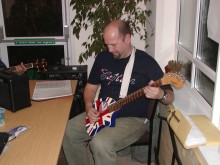 In an earlier blog, I described how I spent nearly 25 years working as a neuroscientist in academia. In 2000, I made the decision to close my neuroscience laboratory and focus on working in the addiction field with humans (rather than laboratory rats). I set up an initiative called WIRED (later to become Wired In) and a charity Wired International Ltd. I continued by job as a Professor of Psychology, but when I wasn’t teaching I was engaged in a range of activities in the addiction field. The following section is taken from the last chapter of my new eBook Our Recovery Stories: Journeys from Drug and Alcohol Addiction.
In an earlier blog, I described how I spent nearly 25 years working as a neuroscientist in academia. In 2000, I made the decision to close my neuroscience laboratory and focus on working in the addiction field with humans (rather than laboratory rats). I set up an initiative called WIRED (later to become Wired In) and a charity Wired International Ltd. I continued by job as a Professor of Psychology, but when I wasn’t teaching I was engaged in a range of activities in the addiction field. The following section is taken from the last chapter of my new eBook Our Recovery Stories: Journeys from Drug and Alcohol Addiction.
Given that I did not feel that a medical approach and the use of drugs were the answer to helping people overcome drug addiction, what was the answer? And what methods were used in treatment services that were successful in helping people overcome substance use problems? Clearly, I needed to find and listen to people who were in recovery from addiction, as well as people working in a treatment service that was obtaining good outcomes in helping people recover. I also needed to learn how the treatment system worked, at a local and a national level.
During those early years of Wired In, I was fortunate enough to win the tender to evaluate all projects supported by the Drug and Alcohol Treatment Fund (DATF) in Wales, a major source of funding for addiction treatment services in the country. This evaluation helped enhance my understanding of the multi-faceted nature of addiction treatment, as well as the way that the government-run treatment system worked.
In these early years, I also spent a good deal of time in a local treatment agency in Swansea, West Glamorgan Council on Alcohol and Drug Abuse (WGCADA), where I had made some good friends. I was inspired by the passion and knowledge of the staff, in particular Keith Morgan, Dave Watkins, Lawrence Mylan, Fred Tuohy, Esther Mead, Angie Welch, and Chief Executive Norman Preddy. A number of these people freely talked about their recovery from addiction. I also talked with some of WGCADA’s clients, which I enjoyed greatly. I soon realised that I was in the right environment to gain an insight into what factors contributed to successful treatment. I’ll describe what I learnt at WGCADA first, before describing what I learnt from the national evaluation.
Discussions with clients and staff helped me realise that people requesting help from WGCADA often presented with a myriad of problems, in addition to their substance use problem. These additional problems could in one way or other contribute to, or exacerbate, the person’s drinking or using of drugs. They often contributed to the development of the substance use problem. For example, the person may have been sexually, physically or psychologically abused as a child. Heroin is a great pain-killer, not just for physical pain, but also for psychological pain.
As a result of these additional problems, WGCADA had to address the needs of their clients in a holistic manner. This, in turn, meant that the agency had to offer a range of services, and form collaborations with a variety of other organisations—who could help clients in one way or other—in the communities where it operated. In my desire to understand the nature of addiction treatment, I was embarking on a journey that would take me over time to various parts of the community. I was to later write a 181-page profile of WGCADA which would illustrate the multifaceted nature of the organisation, as well as addiction treatment.
I soon learnt that the model for helping people recover from substance use problems was very different to the medical model. In the medical model of treatment, the doctor or other practitioner is an expert on the nature of the client’s problems and how to alleviate these problems. He or she forms a diagnosis and then prescribes treatment, which consists of applying interventions (e.g. prescribing a drug) appropriate to that diagnosis. These interventions cause change to the client, thereby alleviating the symptoms.
My discussions with staff and clients at WGCADA, and extensive reading, helped me realise that it is the person with the problem who does the work in recovering from addiction. Practitioners don’t make people with substance use problems better; they don’t fix people. Recovery from addiction (and mental health problems) is actually a self-healing process, which can be facilitated by practitioners. Recovery can also be facilitated by non-professionals, such as other recovering people, family members and friends. ‘I alone can do it, but I can’t do it alone’ became an important Wired In maxim.
So if treatment practitioners don’t do the recovery, or fix people, what is it that they do to facilitate the recovery process? Why is treatment important for some people? I gained insights into these issues as I learnt more about the different services offered by WGCADA and how they facilitated recovery.’ Our Recovery Stories: Journeys from Drug and Alcohol Addiction. Copyright © 2021 by David Clark
I’ll talk more about these issues in later blogs this week.
Photograph is of Keith Morgan, who worked at WGCADA and formed the WGCADA Warblers, a rock band made up of people who were accessing the treatment agency for help. The photograph was taken in around 2001.


